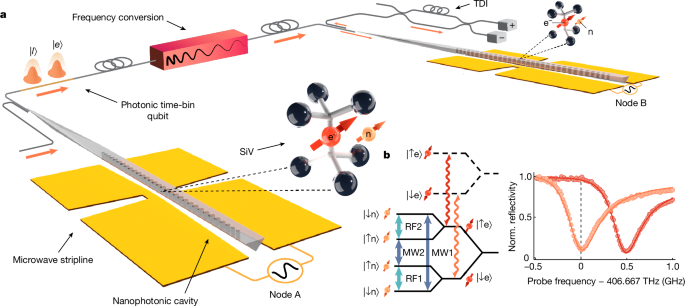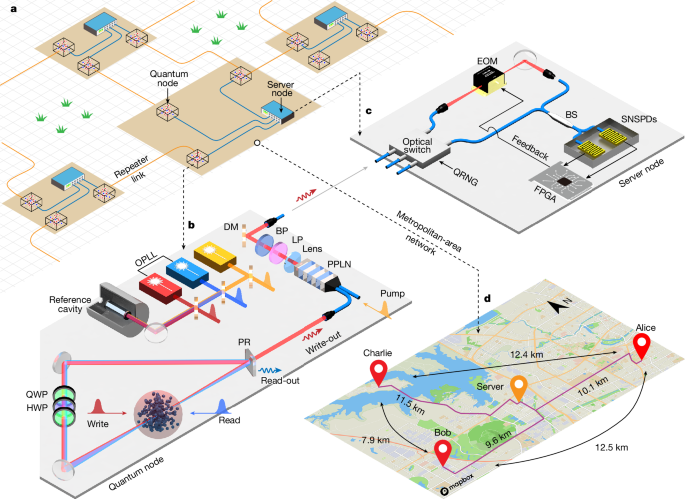Efforts to build a global quantum Internet have received a boost thanks to two recent developments in quantum information storage.
The revolutionary technology will be used to send unhackable communications or to connect quantum computers.
Currently, the Internet transmits information via digital bit strings, 0s and 1s, in the form of electrical or optical signals.
The quantum Internet, however, would use quantum bits or qubits, which rely on quantum entanglement - a phenomenon where connected particles instantly influence each other's state, regardless of distance.
But it is only possible to transmit entangled qubits over long distances via a quantum repeater - which is, as New Scientist explains, a piece of hardware capable of storing the entangled state in memory and reproducing it in order to transmit it further.
These repeaters, to be placed at strategic points, would guarantee the integrity of the signals over extensive networks.
Although there are no quantum repeaters yet, two groups of researchers have created long-lasting entanglement memories in quantum networks over tens of kilometers (a crucial factor for these devices).
Hope in two separate nodes
A group of researchers from Harvard University have created a quantum network with two nodes separated by a 35-kilometer fiber-optic loop.

Each node has a communication qubit for transmitting information and a memory qubit that stores the quantum state for one second.
To establish the connection, a first node, containing a diamond with an atomic hole, was entangled with a photon that was sent to a second node (containing a similar diamond).
When the photon reaches the second node, it becomes entangled with both nodes.
The study, published last week in Nature, showed that the diamonds were able to store this state for one second.

The research team believes that in the next few years a fully functional quantum repeater could be demonstrated using similar technology, which would allow the creation of quantum networks connecting cities or countries.
And in three entangled (nodes)
Separately, scientists from the University of Science and Technology of China have entangled three nodes, about 10 kilometers apart.
They used super-cooled clouds of hundreds of millions of rubidium atoms to generate entangled photons, which are then sent through the three nodes.
Finally - the study, also published in Nature, details - the central node coordinates the photons to connect the clouds of atoms, which act as a form of memory.

As New Scientist explains, the main advance made by the Chinese researchers is to match the frequency of the photons in the central node - to make the quantum repeaters connect at different nodes.






